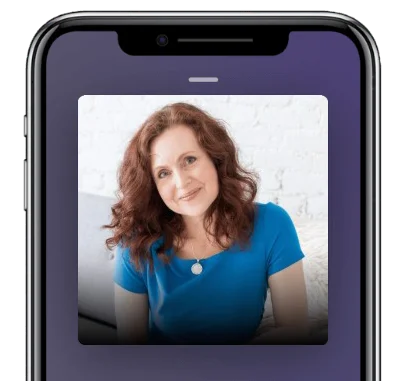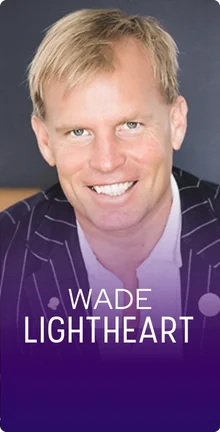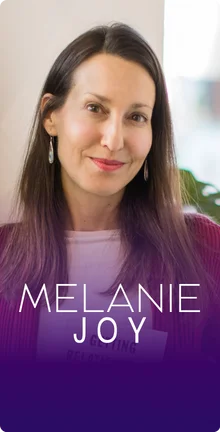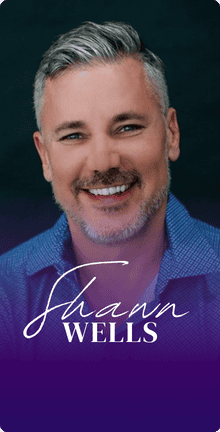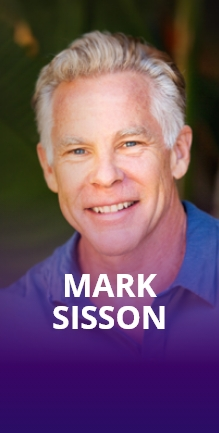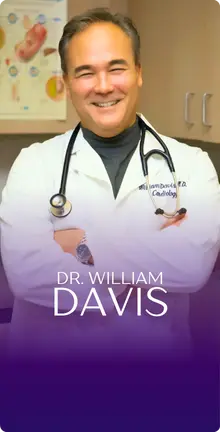In this Episode
- [02:35]What influences Dr. Deanna towards her career in nutrition science and her view on the art of healing?
- [05:38]Dr. Deanna has clients who suffer from the same health condition she had. She talks about the different forms of healing.
- [11:20]According to the book, The Body Keeps the Score, Stephan mentions that there’s an emotional or spiritual root to our physical ailments. Dr. Deanna shares her thoughts on being creative with our healing paths.
- [16:58]What is the spiritual aspect of the rainbow diet?
- [18:58]How does Dr. Deanna describe spirituality and bridge it to science?
- [20:00]What are the universal principles to make spirituality practical?
- [30:30]Dr. Deanna talks about her practices relating to intuitive eating and the pigments present in plant foods, to which she refers the metaphysical aspects of foods.
- [37:30]Stephan and Dr. Deanna discuss the power of thoughts and intention.
- [42:43]Dr. Deanna gives her thoughts on praying over food and explains the love system of health.
- [48:58]How did Dr. Deanna and Stephan cope with their guardian’s upbringing?
- [51:01]The practices Dr. Deanna executes to eat intuitively.
- [52:58]Dr. Deanna speaks about how people with blindness or color blindness cope with reality and find color beyond vision.
- [55:31]Find everything you need to know about eating the rainbows and look out for her in-person retreats at deannaminich.com and join her Nourish Your Whole Self community page.
Deanna, it’s so great to have you on the show.
I’m so delighted to be here with you, Stephan.
You were a guest on my wife, Orion’s Stellar Life podcast. You guys had such a powerful and valuable informational conversation.
We’re going to go into other more esoteric topics, as well as what you’re most known for; eating the rainbow diet and the different colors of the foods you intake have different effects on your biology and so forth.
I’d love to start by hearing your origin story. How did you become an expert on eating the rainbow and the different kinds of nutrients in whole foods?
It started with my mom telling me when I was eight years old that “the whiter the bread, the quicker you’re dead.” So it was my parents, especially my mother, who created this journey for me, because she woke up to health, to food, to Richard Simmons, to Adelle Davis in the 1970s. I was just a nine-year-old, and I was taking all of this in.
To me, it seemed very emotionally polarizing. It was very difficult to wrap my head around that, so I pushed against it hard. As a result, I had an eating disorder in my teens. And then, I went on to study science as an undergraduate.
I studied science but was also very intrigued by philosophy and English literature. I minored in English Lit. All of my electives were taking courses like studying Emily Dickinson studying Walt Whitman. I had that feeling of connecting to, we might say, “left brain–right brain, “but I don’t even know if those hemispheric designations are even accurate anymore. I think it’s just more or less really seeing that there’s more than just science as a method.
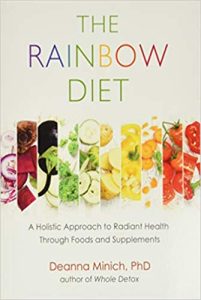
I was intrigued. I took my first yoga class when I was 19. After that, I began to take other more esoteric classes like world religions and philosophy of language. I started reading different books that I hadn’t grown up with. Then I went to graduate school. I continued my study of nutrition of all things, especially when I was so against my mother’s push to have healthy food in the house. I finished studying it and going pretty deep.
I spent four years of undergraduate and three years of graduate school, then I went on for my Ph.D., going even further, looking at nutrition. I’m a little bit of an all-or-nothing person, where if I’m going to really get into something, I want to immerse myself.
I think that for everybody’s origin story, there is some component of personal healing for them. Side by side with all of my studies, I also had a lot of health conditions. Most of those revolved around my reproductive tract.
I had endometriosis, and I had a blocked fallopian tube. These kinds of issues ran in my paternal family line. I was constantly coming up against, “okay, I need to find a different modality, I need to look under the hood, I need to look at other things to facilitate my healing, and maybe not everything is food-oriented.” I think that side by side with my study of science, there was also the art of healing in my personal life.
You mentioned reproductive issues. Are you working with clients now who are facing reproductive issues and helping them to get past those?
Interestingly, you mentioned that because it’s true. Somehow, there’s some gravitational pull to people with like issues, whether energetic, physical, emotional, or mental. Bringing creativity into all I do has been part of my mission. I am bringing that through color, through art, through healing.
Yes, much of my work connects with women with similar struggles. It’s wonderful to show them a different way of working with their bodies.
Much of my work connects with women with similar struggles. It’s wonderful to show them a different way of working with their bodies.
How might that work? What would be a regimen of health supplements, modalities, and things that would address a woman’s reproductive difficulties? Give an anonymized example of somebody who had a breakthrough because of your work.
I think it’s about all forms of healing, whether a man or a woman and how we identify with our gender. Healing comes in many different forms. So often, we hear that food is medicine. People focus on nutrition. When a certain dietary approach doesn’t work, they have to figure out, “oh, what food should I be having, or what food should I let go of? Is there an allergy component?”
Healing is like an onion. We start with the more physical parts; that’s where my training and the personal journey took me. I was looking at my nutrition because that was also my upbringing, to look at the foods I was eating.
The other aspect of being physical about our healing process is looking at physical activity, motion, flow, and how active we are in the world, like moving our skeleton, our muscles, and just the structural elements.
There are the mental-emotional facets of our being that need to be addressed in the healing journey. For anybody with any health issue, we need to look at emotions and how those emotions are at play. If I’m not expressing my feelings and not allowing myself to be in that space, somehow, my body starts to signal back to me. It becomes the messenger for what I most need to address. Those symptoms come through loudly.
One of the ways that I helped to work with what I had in addition to everything else that I was doing, dietary supplements, bodywork, chiropractic, acupuncture, energy medicine, and Reiki, I was having medical intuitive read me as to what was going on, it was like a big kaleidoscope having all of these different portals into my own healing process.
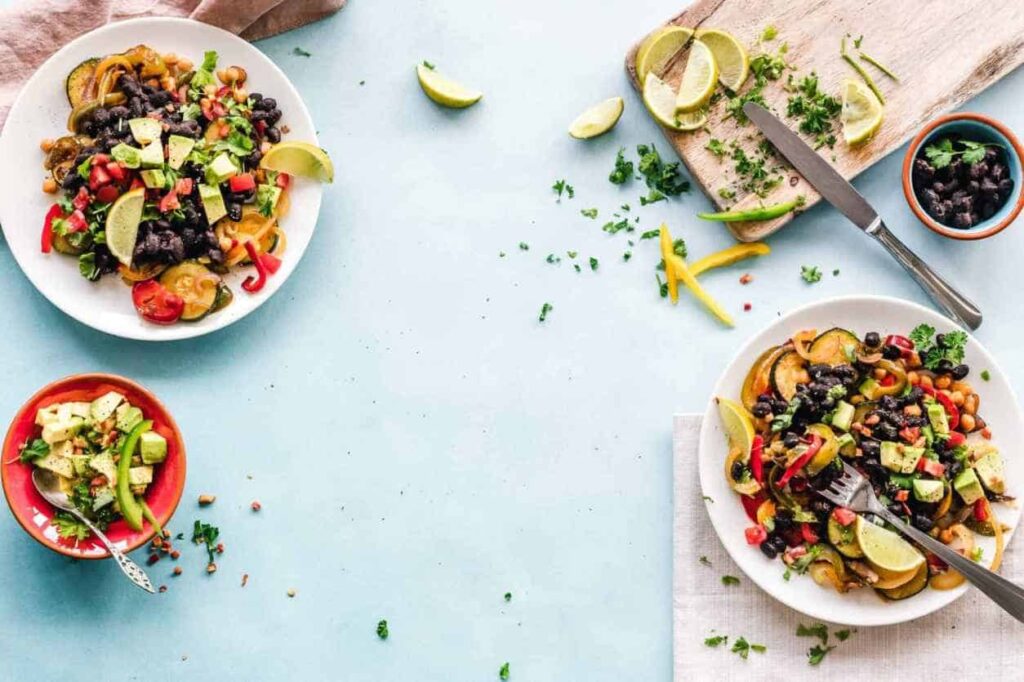
That is part of that journey. I learned a lot about myself, healing modalities and healing in general—the physical, emotional, mental, spiritual, and energetic aspects of healing. But I think what worked quite well for me regarding my health issues—reproductive or otherwise—was getting into this mental-emotional space through the conduit of color and art.
What I began to do, especially in my late 20s and into my early 30s, was I started to paint. I began to paint with bright colors, just amorphous, chaotic shapes. Not like I was trying to paint a house, a lake, or a village. It was simply a splash of color on the canvas to get out of whatever needed to be communicated to the external realm. So I began painting certain colors and shapes.
I want to give credit to my husband, who stepped back and said, “Deanna, I see a theme to your paintings. You’re painting your ovaries, your uterus. You’re putting them all over our house.” It was interesting because I hadn’t quite seen that there was a pattern to what I was painting. But when somebody witnessed that for me, specifically my husband, I felt like, “oh, maybe my body needs to express itself in ways that go beyond words.”
Color is healing.
I may need color. For me, color is medicine. Color is healing. I’m missing color, like a nutrient in my life. That’s what helped me. I think everybody’s different. It’s not like there’s a protocol.
There are some basics of good living. Eating colorful foods, moving every day, hydrating, sleeping well, relating well, relaxing well, all of those things. Whatever we’re drawn to, whatever we’re most curious about, is probably where we need to take our energy and move into.
I’m guessing you probably are familiar with the book, The Body Keeps the Score?
I am. It’s a good book.
The concept of the issues is in the tissues. There’s an emotional or spiritual root to all the physical ailments, diseases, and chronic pain we’re experiencing. I’d love to hear more about that. You got all this benefit from having the health challenges that connected you to your mission and gave you all this raw material to work with to help heal all these other people.
For example, our babies in the world wouldn’t have been here if you hadn’t worked with those particular clients who were having those reproductive issues as an example. So your ripple effect is huge. It’s so much more than you might even imagine.
I’m curious to hear the main learnings you got beyond, like, “Okay, this got me connected to my mission and gave me all this great focus on what I’m doing now, but why did they even show up beyond that?” What was the emotional or spiritual root of the health issues you had in place?
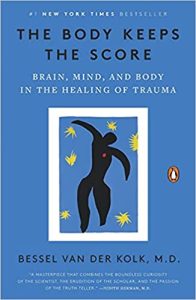
It’s a good question. By the way, I don’t know if what I have done with the rainbow diet or if my art has led to more fertile women and women making peace per se. Sometimes I hear anecdotally that there is an “aha” moment for them. That’s great, but I never want to give credit for anybody’s healing. Everybody is connected to their healing path.
We’re just people by the side of the road, cheering them on and doing what we can to support them. So there’s that, but you’re asking a really deep question. You’re asking, what is the spiritual aspect of you coming into this life and really being connected to color, to art, to having these issues?
I do think that for me, as a woman in science, it has been very challenging in some respects to always be on the defense, live within my mind, be within the intellect, and use my brain more than my body or my heart. That whole journey into color was about me opening up into my more colorful, even authentic self that there was something deep that was missing. Through that process, I became much more integrated into my thinking and feeling, in other words, really bridging science and spirituality.
Many practitioners are out there; many are really focused on protocol and on different aspects of healing. Do they know enough? Do they need another certificate? Do they need another degree?
What we miss most in healing is the art, the intuition, and the holding of space of this element of being creative. So I got turned on to more of this creative path just by way of my ailments and then moving out of them by making sure I was being creative.
We need to be creative about what it means to be “creative” because many people will say, “oh, I’m not an artist. I’m not creative.” But in their mind, what they think of as creative might be very limited. It might be, literally, a poet or somebody who makes their living as a musician, and that’s their livelihood.
Creativity can be little micro-steps of being creative. It can be being creative in the kitchen with one meal. It can be creative on the way to work in the morning by listening to different musical pieces or taking a different way to work. It could be talking to different people, reading different books, or breaking out of your routine.
When I need to heal, my default is expanding rather than contracting into it.
We need to be creative about being creative. In doing that, we start to open up this whole kaleidoscope of the many facets of who we are and begin exploring that.
When I need to heal, and when I have a symptom or a condition, my default now is to expand rather than contract into it so that I can get the benefit of looking big, broad, and in a very creative way as to what I may most need at that moment.
I love what you said about being creative. We put ourselves in such boxes. I used to think of myself as not very creative because I couldn’t draw or paint. I was never that talented at music, so I shelved that side of me and worked on all the left-brain stuff.
I studied biochemistry as a graduate student. I just shut off my creative side. Now I recognize how creative I really am, even if I’m not a painter or musician. I have creativity in my bones.
It’s true. For many people who are in science, sometimes the way to get to this place of being creative and even tapping into one spirituality is through science or something that we consider more left-brain and more logical.
I hear that from other scientists, where you see the beauty, the mystery of nature, how things are put together, and how you try to reduce it and simplify it. In doing that, it unlocks the further mystery. There’s something really big in what is small.
I like to connect the physical to the spiritual because it gives people perspective, even in their healing journey.
I like to connect the physical to the spiritual, the micro to the macro, because it gives people perspective, even in their healing journey. If we can look at the smaller things happening to us in life, then zoom out and look at what you said to me. “Hey, Deanna. What was the bigger mission, the bigger aspect of you getting sick? What was that really about?” When we do that, we ratchet it up and out of our physical constraints, and we move into more of the mystical, spiritual aspects of, “wow, what is our soul here to do? How are we growing?”
It’s such an important question. What would be some practical things you could offer our listener who maybe isn’t that into spirituality or doesn’t want to have conversations with God like Neale Donald Walsch necessarily, but they want to be their best selves and be a good person in the world? What practical advice would you offer them that helps them to bridge science and spirituality?
First, we have to define spirituality because I don’t necessarily see it as a “conversations-with-God–aspect.” Spirituality, to me, is that sense of feeling that you’re a part of something bigger. There’s a sense of meaning in one’s life. There’s a sense of purpose.
In the scientific literature, there’s a term transcendence, which I really like, where we take ourselves out of ourselves. We give of ourselves in the act of maybe service, or again, we get a different perspective.
The way that I define spirituality is perhaps a bit more lifestyle-oriented. It’s much more about how we think and what our philosophy is. What is our belief system? How do we interact with the planet, with the universe, the cosmos, and the entire aspect of everything that we have physically known of? That’s how I see it.
I do think that there are three principles to make spirituality practical. I talk about them even when I’m talking about food. These are universal principles. The first one is truly about color. I do think that color is a way for people to enter into this sphere of something that is very psychologically powerful.
Color can change our emotions.
Color can change our emotions. It can change our behavior, and it can change our actions. So I do think that even with the presence of color in our environment, if we’re in a green forest, if we’re watching the blue ocean, we’re in a red-orange desert, and really tapping into those colors, wearing certain colors can also potentially change overall just how we feel.
I do think that bringing in the element of color in whatever way would be. Maybe it’s eating from a blue plate, and maybe it’s drinking from a red cup. There are so many ways that we can start to observe the color in our environment. Every color has a certain functional signature, even within foods.
When I talk about eating the rainbow, one of the ways to really wake up to something bigger and to have better mental health, to have a better mood state, and to have less anxiety and less depressive symptoms, is to have more of those colors. I think, first and foremost, really coming from that place of color is key.
Secondly, variety. One of the ways that we can become more practically spiritual is to have diversity to have variety in all things. That would be in our life experiences. It was almost like when I was traveling a lot.
I used to be on the road pretty constantly. I would have all these different experiences. I would become very philosophical as a result of experiencing all of these different events, meeting different people, and trying different foods. It really opened my eyes to a bigger world.

I think that having varied experiences on the outside, as well as having varied experiences on the inside, we don’t necessarily have to travel to have a spiritual experience. We can travel on the inside. We can get alone time and stillness.
This is one of the things that people are really uncomfortable with. That is being alone, having that alone time, and dipping their toe into the stillness of their being. There is this incessant doing this within our culture. We always have to be busy. We’re active, and we’re very young. And there isn’t a lot about being Yin, receiving, or quieting.
We really struggle as a society (I think) at large just to do that. I think one of the ways to get a little piece of the more interconnected spiritual nature of who we are is to tap into the wholeness by getting really quiet on the inside. It seems like the easiest one, but it’s actually one of the most challenging for people.
People usually want to do something there. They’ll say, “Deanna, what do I need to do? Do I need a glass of water in the morning? Do I need to do yoga? What do I need to do?” I would say, “Perhaps, we need to undo it.”
We need to get into that quiet space within each of us to tap into our creative spirit and see what comes out.
We need to get into that quiet space within each of us to tap into our creative spirit and see what comes out. Some of the best ideas I get are in those moments of quiet.
You’re tapped into the field. You mentioned variety as being a key aspect of this defined approach. It reminded me of a book I read decades ago called How to Be a People Magnet. The idea in that book that really stuck with me is “scrambling,” which is getting outside your comfort zone, doing something that you would not normally do or want to do as an activity, just to try it so that you have a more diverse set of experiences and activities that you can use as bridge builders with different people and different strokes for different folks.
I have no interest in golf, absolutely none. But if I at least try it a few times and have some interesting experiences and epiphanies, learning lessons from it, then somebody who’s an avid golfer I can have a meaningful conversation with instead of just talking about the weather or the recent news.
People are interested in you if you’re interested in them. To be interesting, you need to be interested. If I’m going to talk to a golfer, I should have some fodder to work within that person’s area of passion.
I like that a lot. I think being curious leads us to a more creative approach as well. I love learning. I do a lot of teaching, but for me to teach, I need to immerse myself in learning anything that gets us out of our ruts. If we’re in a food rut, where we’re eating the same thing every day, chances are, we’re in a life rut, where we’re doing the same things every day.
Anything that gets us to flow neuronally is good for the brain.
Anything that gets us to flow neuronally is good for the brain. Anything that gets just to flow in the heart gets to change those emotional fluxes. And then anything that changes the gut, making sure that we’ve got new foods coming in, that we’re changing up the foods that we’re taking in to fortify that gut microbiome better, is really key.
Diversity is one of the principles of nature. I like what you said about being interested because it allows us to tap into things we may know nothing about so we continue learning. We continue to flow. We inspire and spark the nerves, the heart, and the gut, which may generate different behaviors.
This idea of if you’re in a food rut, it shows up as a life rut. I love certain foods; I’ll just get into this pattern of making them all the time. On the other hand, I don’t really enjoy cooking, so if I’ve mastered something, let’s say, how to make an avocado shake—avocado and half an English cucumber, peeled lemon, some spinach, almond milk, water, and optionally a little bit of Stevia to sweeten it (but I don’t sweeten mine)—I can make that day after day.
It’s super healthy, and there’s only one color there. It is so boring. It’s healthy, but it’s green. I know that many people, you’ll hear them, like, “Okay, you need to eat more greens, plant-based diet, lots more greens.” But what I hear from you that’s different is that you got to eat the rainbow. You got to eat different colors and not just lots of greens.
My understanding of that is pretty rudimentary. I know that there are certain antioxidants in different fruits and vegetables, and that’s what gives them their color. Something that’s a vibrant red has a very different antioxidant than something that’s a vibrant yellow.
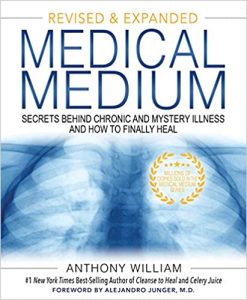
Maybe you could talk more about that and then other aspects of the benefits of taking in the different colors, and also from a metaphysical perspective, too, because I think there’s an aspect there where each color has a certain frequency or vibration to it. You don’t want to get stuck in a vibrational rut, either. I’d love to hear your thoughts on all of that.
Wow, that’s a big question to unpack. Let’s start with your smoothie. When you put that smoothie together, and you have a connection with that, perhaps you do need something from that. It’s not necessarily something that’s unhealthy to do.
I don’t discount the constant steady Eddie staples to our daily routine. Some of us need a bit of that routine to structure our day and ensure that we’re getting certain things.
Routine being routed is important for us as humans. In fact, some of the studies suggest that we need to do certain things at somewhat constant times throughout the day for the best effects. Even with meditation, there was a study that I remember from some years ago where you have people who meditate just on the weekend and aren’t regular meditators versus people who do it constantly. Of course, that consistency is key for having even genetic impacts and physiological changes that are much more potent.
I don’t discount our steady Eddies. To constantly reevaluate our steady Eddies in what we’re doing and to have consciousness in doing that. As you put together that green juice, you are reflecting on the avocado, the English cucumber. As these things come together, you’re tapping into the moment of how the food is connecting to your body. Maybe, instead of a lemon, maybe a lime today.
I have this practice, even for myself, and I talk about this as it relates to intuitive eating. Walking into the kitchen, really connecting to the body, connecting to your own sense of self, your physical, your emotional, your mental, your spiritual needs, and wrapping that up into a question of, “what do I most need right now?” And seeing how you can be receptive and listen to the body and go from there. There’s that.
Again, back to your concoction there, trying out, perhaps once a week, a new fruit or vegetable that goes into that particular smoothie. Even trying one food may be a food you’ve never had before. Maybe it’s a spice or an herb. It could be something that’s in the season that you don’t typically get to have within your daily routine or how you eat.
Healing is like an onion and is composed of many layers. Healing starts with the physical and then it turns inward. Share on XThat’s worthwhile because it does open our eyes. It opens up our taste buds. It really connects to the digestive tract. Viscerally, it’s connecting to us on a very emotional level.
Even within the colors, you were asking about colors and pigments. Within green, there is diversity. Even if we were to stay with a green juice or a green smoothie, there could be diversity amongst the green foods. I see that people stick to certain foods all the time. Even if they’re eating the rainbow, they might be just eating the same foods within each color category. Yes, they’re getting the rainbow, but they’re not getting a diverse rainbow.
Let’s go with your green because there are so many green foods compared to the other colors. It’s easier to get a variety of green foods than others, so swap out and try out different green foods because green foods have so many phytonutrients in different families.
We have chlorophyll in green foods. That’s what makes them green. Then you have different B vitamins like folates. In some of the leafy greens, you have vitamin K or magnesium. The more diverse you can get, even within one color, you tend to get different arrays of nutrients. The literature suggests that the more varied we eat, the more food variety we have, and overall, the greater our nutritional status.
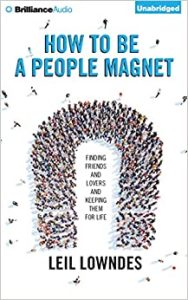
It’s almost like art, where we have all these different paints or foods from nature with all these other pigments. Each food is unique, and it’s providing to you with these different phytonutrients that are unique to its signature, and then it goes in and forms yours. That’s why I think we need to have diversity, even within the colors.
You were asking about the metaphysical aspects of the vibration, the wavelength. That really speaks to the pigments in these colors of foods. Why are green foods green? The pigment, the wavelength, and how our bodies, our mitochondria, specifically, how it’s breaking down those bonds for energy, those colorful bonds.
What’s really beautiful about many of the plant foods with all the different colors is that those colors represent pigments that can capture light. So they engage in photosynthesis, harnessing that energy from the sun, bringing in that type of energy that we then break apart, and then we put that into our own body’s currency of ATP.
It’s a beautiful process if you think that our lives are run through light, through the sun. Through the sunlight, we’ve got this full spectrum of different colors. We can see the full array of these different colors within the plant kingdom. That’s not just fruits and vegetables. That would be whole grains and legumes.
I’m drinking green tea, and I try to diversify my tea. Even within green tea, I try to get different kinds of green tea because Sencha is different from Gunpowder and is different from Genmaicha. You’ve got all the different varieties. If we have apples, having different kinds of apples in order to get different phytochemicals.
All in all, it’s an old adage. Variety is the spice of life. That variety helps to make us more resilient. Ultimately, your podcast is about optimizing who we are physically, emotionally, mentally, and spiritually.
For sure. There’s an interesting study that pops into my mind that would be appropriate to bring up at this moment. I learned about it from the book, Mind to Matter, which is a book that my wife, Orion is reading. I only just picked it up one day and started reading randomly. What I was led to do was a case study around being able to send your Chi energy, your lifeforce energy, to something that’s slightly radioactive, like Americium-241.
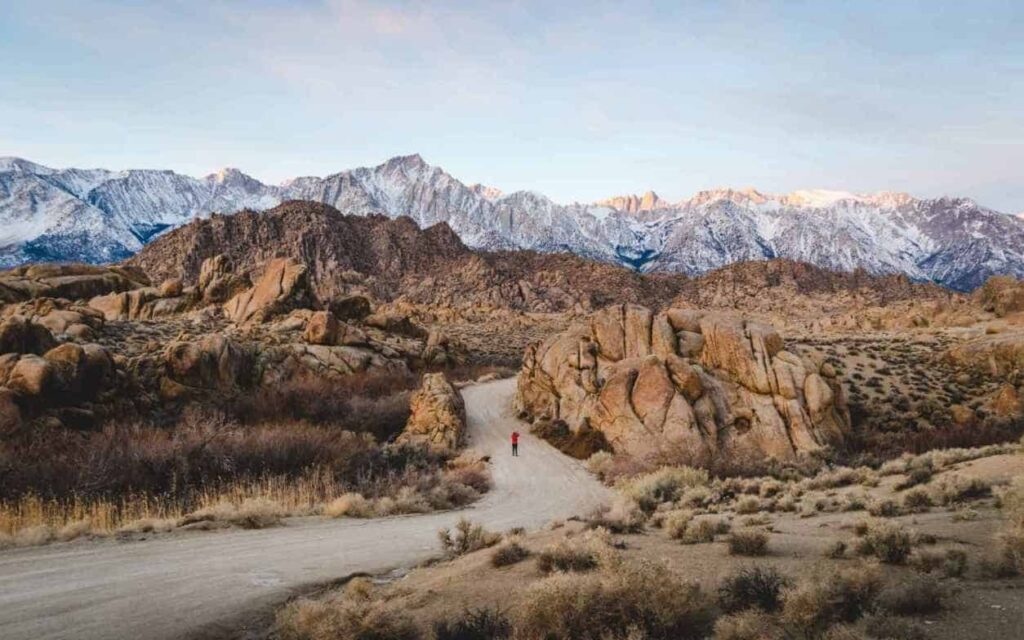
You can actually, just through the power of thought and intention, change the rate of decay that is so normally precise that its half-life is 422 years or something like that. There were scientifically-validated, reproducible studies where somebody who is a powerful meditator or energy healer could adjust that plus or minus 10%.
I think it was 11% in the negative and 9.8% in the positive or something, but to be able to change the rate of decay of it, that’s modifying the weak force. That’s not something that can be affected by, let’s say, strong EMFs, gravitational pull, or extreme temperatures. None of that affects the rate of decay, but our thoughts can. That’s mind-blowing. I’m curious to hear your take on that.
That is mind-blowing. I do think that you’re onto something there when you talk about intention or directing your thought energy into something. I’ve seen that more in the aspects of healing. Just to give one example, even my father had to have hip surgery. He had to have his hip replaced. He kept telling himself, “I’m not going to need any physical therapy after this. I’m going to be walking.”
Emotions play a huge part in one’s health. Many studies have shown negative feelings can cause chronic illness and stress. Share on XHe went into the surgery with this mindset. He came out great and did exactly what he had set forth to do with no physical therapy. I had the pleasure of even meeting the woman who would have been his physical therapist. She laughed, saying he didn’t even need that additional focus.
My dad’s pretty strong in his mind. When he gets his mind on something, it’s like a magnet. He magnetizes to that thought. That’s why we also have to look at what we’re magnetizing to in our mental sphere because other things may actually drain us.
You just gave an example of where we can use it to influence the decay rate. I’ve seen it repeatedly in the healing realm, but we can also look at it on the other side of, what are our thoughts?
In fact, I talk about thoughts being almost like nutrients. Either they could be highly processed things that we keep running repeatedly. We keep ruminating. It keeps draining our energy like an ultra-processed food. Or we can have a thought that acts like a nutrient or a nutritional supplement, where we take it and feel better. We feel more optimal. We feel more energy from it to follow how we feel when we think certain thoughts.
Our thoughts are like nutrients to the body.
That is a tough one because thoughts feel like they’re out here. They don’t feel like they’re internal to the point that we can control them. That’s where things like meditation and physical activity, having a lot of these mind-body practices, can be really important for corralling the mind, making sure that we focus and we harness our thoughts where we really want them to go long-term, and what kind of end result we would like.
This is such an important point. I wanted to piggyback on that by saying that when you’re eating something really nutrient-dense versus eating something processed and straight out of the box, which I have to admit, I eat way too much processed food, I at least have the intention and the discipline of praying over my food.
I may not remember to do it before I eat it, but maybe while I’m eating it, or even after I eat it, then I’m like, “oh, okay, I’m going to send blessings to the food, and also be thankful for it and transmute it.” You can do this with anything that you’re consuming.
I believe that’s very effective and powerful, like whatever you’re consuming. There are also studies done. This is not just woo-woo. It’s scientifically validated.
Dr. Emoto and all these water experiments with crystallizing water, and beforehand, putting labels on the jars of water that had things like love, peace, and joy versus hatred, apathy, and all sorts of vibrationally negative words. The ugly crystals formed from the water that was labeled with something ugly, like apathy or disgust, versus the ones that were beautiful because they had the words joy, love, or peace on the label. It’s scientifically reproducible. It’s really amazing.
Absolutely, this works when you pray over the food. In fact, I started doing this just in the last year or so, inspired by my sister-in-law. She’s very religious, like Orthodox Judaism. She always prays over her food before touching or eating it.
I’ll forget, now I’ll do it while I’m eating it. She’s very strict about that. But I think it makes a difference to vibrationally send this out to the stuff you’re consuming. I’m curious to hear your thoughts on that.
I grew up Catholic. I remember that one of the things that we always did was we would say grace before we ate. I liked the idea of having a ritual connected to food and eating because it sets the tone. It places the energy in a higher place if you will. Emotionally, it’s up. Mentally, it’s up. Spiritually, it’s up. Physically, it gets your body anchored.
I do think that grace or saying some blessing or giving thanks, the science of gratitude, is definitely out there. I think it’s like a value-add to meditating. If we meditate or pray, and we’re bringing in a lot of gratitude or appreciation, I feel like it’s almost like gratitude is a magnet for more things to be grateful for.
You can’t go wrong with having gratitude.
You can’t go wrong with having gratitude. It puts your body into a more heart-resonant state, where the heart rate and parasympathetic and sympathetic nervous system feel more in balance and alignment if you believe you are grateful and are expressing that.
I talk about the seven systems of health, which are aligned with the chakra system. They’re not identical, but they have a similar placement. When I think of the medicine of gratitude or appreciation, I reflect on the heart. I reflect on what I call the “love system of health,” which is the heart, the lungs, the vasculature, the arms, and the hands. When we go to hug somebody, wrapping our arms around them extends the heart field.
You might find this funny, too, because, for some time, I would eat out of a bowl shaped like a heart. It was a red bowl with a pink inner lining. I really liked it because it wasn’t that big. If you put your two hands together and imagine a flap over your hands, it’s been said that that’s more or less the size of the stomach that is unique to you.
This bowl was perfectly shaped. It was aligned to my stomach. It reminded me that every time I ate, I would see that heart shape to bring in appreciation. That was like the special vital force that I was bringing to the meal.
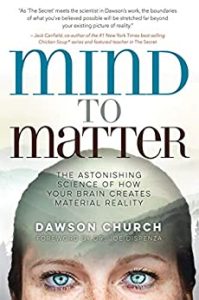
I’m really thinking about all the different beings, animals, and aspects of nature that truly go into a meal. If you think about it, it’s really profound. Just even looking down at the plate, looking at one meal, can take you into more of a spiritual mindset. So, again, spiritual meaning, feeling connected, feeling part of a great whole, feeling your smallness amongst the greatness of the bigness.
That’s what a meal can do because you look down at your plate. Even if I think of my plate this morning, I think about the water element. I think about the fire element that I use to cook the food. I think about the community element. I think about the growing.
It’s summertime now, and thinking about the interplay of elements and how traditionally, making sure that those elements were in balance in our food, our environment, and our bodies leads to alignment, health, healing, and optimization.
One of the things I posted recently on my Facebook page, essentially, was about the fire element. When people overcook their foods or let’s just say that they’re toasting, they’re grilling, and they’re frying, they’re browning, they’re boiling, it’s summertime, so people tend to have more barbecues. That brings in a lot of the fire element. It’s already very warm and very hot in some places. With that imbalance, what we do is actually create more inflammation in the body. We get more of the fire element in the body when we bring it into our cooking.
We can look at health in a very elemental framework, much like in Ayurveda or even in traditional Chinese medicine, where there is this acknowledgment of the elements and how the elements on the outside need to be in balance on the inside. We can do that through food, ensuring that we have enough water and hydration, fire, air, earth, and even proper use of metal through cookware.
That may be in the form of iron-rich foods or getting enough to sink into your diet.
Sure, and even to reduce the number of heavy metals that we might be taking in through methylmercury sources or high arsenic through things like rice or chicken. Yes, there are many different interpretations of how we could look at metals.
Variety is the spice of life. Surround yourself with an abundance of options to help make you more resilient and strong. Share on XI like what you said about minerals because essential minerals that we need, like calcium, selenium, zinc, iron, and magnesium, essentially compete with their very chemical lookalikes, the heavy metals, things like arsenic, lead, cadmium, and mercury, just to name a few.
Right. I want to switch to the lightning round. I have probably three or four things I want to ask you about.
First off, your upbringing raised Catholic, told as an eight-year-old that “the whiter the bread, the quicker you’re dead.” That seems a little traumatizing. I’m curious, how did you receive that? Was it traumatizing to you, or was it take it all in stride and like water off a duck’s back sort of thing?
As I got older, I realized this was great. It really ties into everything that I’m doing. I liked the fact that my mom took (I think it was) Adele Davis’ wisdom about ‘the whiter the bread, the quicker you’re dead’ kind of thing. It informed my path. I made the best of it and am grateful to have had that experience. You may perceive it as stark, and maybe at the time, it had to evoke those emotions from me to catapult me in a certain direction.
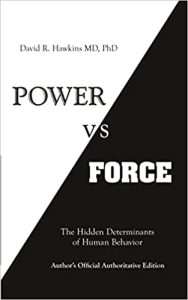
Everything’s for our highest and best good. I was raised by a grandfather who was a converted Catholic and a grandmother who was a Jehovah’s Witness. They couldn’t agree on anything, pretty much. That launched me into agnosticism, almost atheism, because they’re like, this is all bunk. There is no stability in that.
Let’s move on to the next question, which is intuitive eating. Perhaps, muscle testing might tie into this. How do you, from a practical standpoint, intuitively eat? Are you using muscle testing as an example popularized in the book Power vs Force by Dr. Richard Hawkins, or is it more a gut feeling? Does this instinctively seem like the right thing to eat or not, or is there some other process to this?
Everybody has their own method of intuitive eating, but for me, it’s about being in open communication with my body. So let’s say that I keep craving pomegranates; I may need to get some pomegranates next time I go to the store.
You have to filter the impulses that you get because things can be instinctual and impulsive. They can also be intuitive, where they come in differently. The language of those two things can be a little bit different. If you keep craving chocolate cake, intellectually, like, “no, I definitely should not be eating chocolate cake for various reasons,” but maybe chocolate cake could symbolize something intuitively. It may symbolize celebration, some gathering, being amongst the community, or perhaps somebody’s birthday is coming up.
We can look at food as a divining rod into more symbolism. It just depends on how we want to look into it. But at the moment, it’s like when things come up time and time again, and I’m connecting to that, and it has a good feeling in my body when I reflect on it.
Intuitive eating is about being in open communication with your body.
Last really quick question. Have you studied or looked at color blindness? Because you’re so interested in color, and that seems like a North Star for you. What about people who are colorblind? There’s got to be some emotional or spiritual route to that particular illness or genetic disorder. I’m curious about that.
There’s a great podcast episode looking at how all the different animals in nature have different perceptions of color. Like dogs, instead of three cones, they only have two cones. The manatee shrimp has like 16 cones. Butterflies can see ultraviolet things of that nature. I think however we see is really what frames our reality.
I do think that my grandmother developed blindness. I never got to know her, but she developed blindness from an illness. I think for her, it was very frustrating because she wasn’t born with that sense of being blind. She knew what it was to see and then didn’t have that later. So I do think what happens for people, either blind from birth, who become blind later or maybe even have color blindness, are we adapt. We need to bring our other senses to the foreground somehow, and we might be more astute in hearing.
When I hear stories about my grandmother from my mother, her hearing becomes more of her tentacle in the world. We just have to figure out that we have senses. Some would say that we have five senses. Maybe we have more, depending on how we develop them. I think that the skin is a very interesting sense. We have the sense of touch, but many layers of our senses exist. Color is just one.
The body needs to express itself in ways beyond articulation. Repressing yourself can cause considerable struggle along with lasting emotional and mental pain that can manifest in diseases and ailments. Share on XI have not talked with somebody who’s blind, but I have read that people who are blind can actually feel color. They get an actual sensation or impression of color beyond vision. I don’t know if that’s true. I think it’s an interesting concept. It’d be nice to put that to the test. That would be easy to try out.
Color is powerful. But beyond color and vision, I think that we’re talking about senses and tapping into our senses as human beings and how we relate to our physical, emotional, and mental worlds.
This was such an amazing and fascinating conversation. You shared such important, powerful information. If our listener or viewer wants to learn more from you, follow you, and work with you, where should they go?
My website has everything that they would need, so deannaminich.com. On the website, they’ll see links to my social media. I have a Nourish Your Whole Self community page. I have different events.
I’m making a retreat in September. I’m really excited about doing that. It’s an in-person retreat. So it’d be nice just to be in person again, with people and to be doing some healing work.
Of course, I have a blog, a little bit more science for people who are more into the nutritional aspects of food. I have a number of different blogs that we post there.
Awesome. Thank you, Deanna. This was fabulous. Thank you again. Thank you, listener. Please go out there, eat the rainbow, and fill the world with your light. We’ll catch you in the next episode. I’m your host, Stephan Spencer, signing off.
Important Links
Connect with Dr. Deanna Minich
Books
People
YouTube Videos

